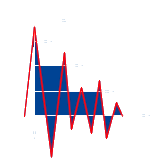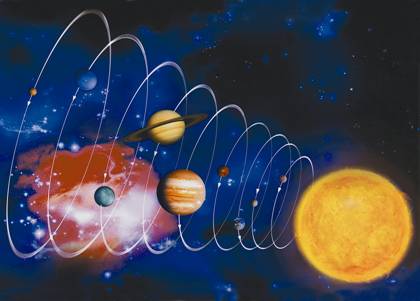
|
Secrets of the Universe
MIND COLLISION ON PLUTO
"Nothing is given to reveal for man without God's will". Valery Krishnev About Pluto Pluto is the ninth planet in the solar system, revealed in the Lowell Observatory on the 18th of February, 1930 by Clyde Tombaugh (died in 1997) as the object of 15th magnitude. It is the most distant large solar system planet ever. The orbit of Pluto has the largest inclination to the ecliptic and the largest eccentricity of all planets. The Pluto’s Sun distance is 30 - 50 AU, its equatorial diameter is 2.3 thousand km, 0.18 earthly, its weight is 1, 31022 kg that is 0.002 of the Earth mass. The period of revolution around the sun is 249 years. Pluto passed through perihelion in 1989 and from during 1979 to 1999 it was closer to the Sun than Neptune, ie it went close to Uranus. The name of the planet was given in honor of the God of the underworld and was suggested by the 11-year old girl from an Oxford school - Venice Bernie. The Pluto’s name was first published on May 1, 1930. The search for the planet beyond Neptune started in 1905, the impetus for which was the obvious discrepancy between the calculated and observed orbits of Uranus and Neptune. Between the years 1985 and 1990 Pluto had a series of thin coatings and passages. In observations of such events on the Earth that kind of events take place just twice within the 248-year period. These observations gave an opportunity to discern the spectral picture of Pluto and Charon and construct the first approximate albedo maps of the Pluto’s surface. 1996 was the first time when they managed to get a picture in which Pluto and Charon are seen separately. The density of Pluto is twice higher the density of water. It has a core of water "saturated" (hydrogenated) rocks. The core covers a thick layer of water ice. In 1976 on Pluto there was discovered methane ice. In 1992 there were found nitrogen and carbon, both frozen. Like Uranus, Pluto rotates in the opposite direction of normal. The axis of its rotation is inclined to the ecliptic plane by 122 °, so that the planet is moving "lying on its side." When they revealed Pluto’s doppelganger - Charon in 1978, they got the possibility to specify the diameter and mass of the planet. Its diameter made out 2300 ± 40 km. The Pluto’s doppelganger falls short from it at 20 000 kilometers. Its mass is 10 times smaller. Compared with its central planet Charon is very large. Its diameter is larger than the Pluto’s radius and makes out 1212 km. It has the same density and consists of the same components as Pluto. Charon and Pluto are in mutual rotation with a period of 6.39 days. As Charon has a rather large mass the mass center of the system, around which the rotation is specified, is located outside of Pluto. In contrast to Pluto, which is reddish, the surface of Charon is gray. Main Pluto’s features:
Pluto got his number in the catalog of asteroids:
THE LEADING SCIENTISTS OPINIONS
For Pluto:
As highlighted in the petition, that meeting was attended by only a small group of scientists. In addition, according to the defenders of Pluto, the new definition of the planet is completely contrary to scientific standards.
|
E.W.E. ENIOROSS UG
Kurfürstendamm 207-208
10719 Berlin
Tel.: 0160 9102789
Tel.: 0163 9202219
Tel.: 0176 85054808
E-mail: garrirouss@gmail.com
E-mail: garrirouss@rambler.ru
Internet: http://www.enioross.eu
Mailing address
LIS Reiki Massage for ЕNIOROSS
Regensburgerstr. 16
10777 Berlin


